Twenty years a trooper
Looking back at two decades dressing up as a plastic spaceman
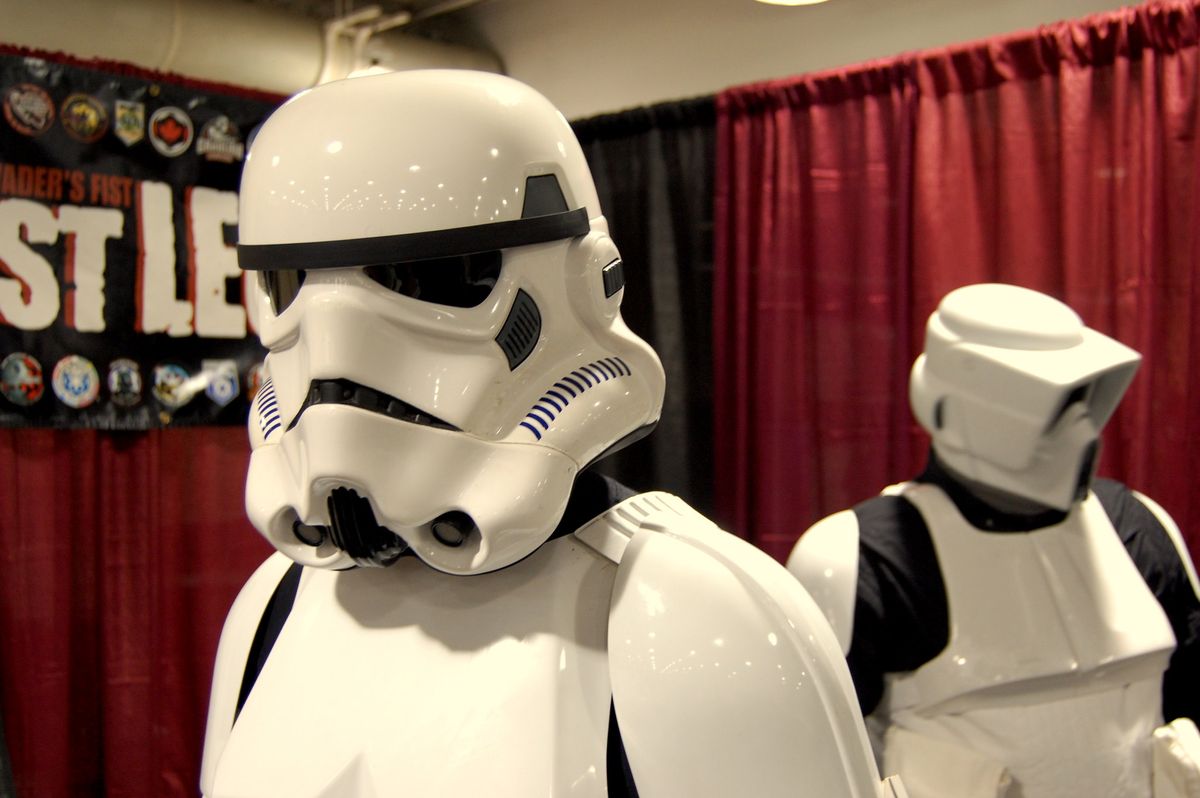
Earlier this fall, I passed an interesting milestone: it's been a full 20 years since I acquired my first suit of stormtrooper armor.
My love of stormtroopers hit in May 1997, when my Dad took me to see A New Hope in Montpelier. As I wrote in the introduction to Cosplay: A History, I distinctly remember riding home, thinking about how cool the armor looked, and how much I'd love to figure out how to make one. I spent a lot of time in shop class thinking about how to construct such a costume, concocted elaborate plans to talk to a local metal sculptor to try teach me to do it, and scoured the web for directions. I never did end up making my own: I realized that the helmet was too complicated for sheet metal, and I never really wanted to use cardboard because it wouldn't look right.
The opportunity presented itself in the spring of 2003: after pestering my music teacher, Mr. Rivers, for six years to play Star Wars, I'd succeeded: we'd play a suite of music for my last-ever concert. I'd heard about the 501st Legion by that point: pictures of members in those early days cropped up in Star Wars Insider, and I asked if we could see if we could get some of those members up for the concert that May. Mr. Rivers agreed (I'm pretty sure this was just to get me out of his office), we reached out to the local garrison, and we ended up getting a trooper, Scott Allen, to drive all the way up from Rhode Island to suit up.
That night's imprinted on my brain: I remember meeting Scott and seeing his armor kit. Troopers were a little more loose in those early days: he had a bullet hole in his helmet and a pauldron with some patches. Not exactly canon, but it blew my mind. We in band assembled on stage and started up, and at the right moment, Scott walked down the aisle. I remember the crowd blowing up when they caught sight of him, and it was a powerful moment that showed me just how people can react to a costume at the right moment.
After the concert and as Scott packed up, I asked him how to get armor of my own. He told me he knew a guy: send him $500, and he'd arrange it. It was more money than I'd ever had, so it was clear that this is something that would have to wait.
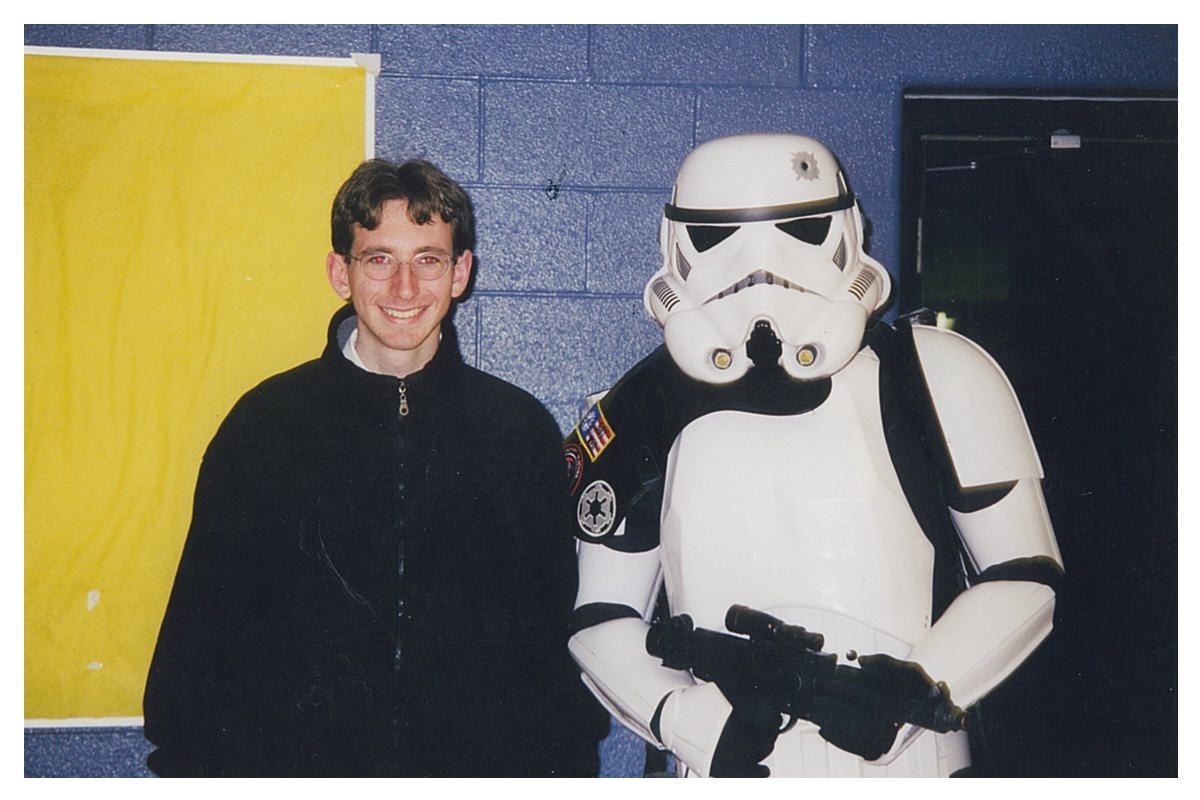
As it turned out, I didn't have to wait long: I'd be working at YMCA Camp Abnaki that summer, and that year, I'd been promoted to senior counselor. There was a small bump in pay, and midway through the summer, our director gathered us SC's together to let us know that they'd made a payroll error: we were being underpaid, and we'd get an extra check to make up the difference: $500. I emailed Scott, got his address, and mailed off a check for the right amount. Then I waited.
I'd hoped that the armor would arrive in time for the end of summer camp, but it was a couple of weeks later. I don't remember exactly when it was, but it was likely sometime at the end of August, after camp had ended, but before I started my first classes at Norwich in September.
I remember that box arriving: a massive thing, packed with sheets of shaped plastic that made up the FX kit (the "brand" name of this particular armor sculpt), and a booklet of vague directions. Scott had told me via email that there were certain ways to construct it, and I should ignore the directions and the included strips of Velcro. You'll want to get a roll of industrial-strength Velcro, he told me. The stuff that came with the kit wouldn't hold up long.
I couldn't wait for that, though. Assembling the armor was pretty easy: it was a matter of sticking the Velcro on the pieces to connect everything, and I'm pretty sure I had the entire thing wearable within an hour or two. The helmet was trickier: it was frustrating to get everything lined up, and I'm sure there was a little despair that I'd never get it completed. But I soon had it together, and for the first time, I was able to fulfill that dream I'd had in 1997: I could be a stormtrooper. I wore the armor to a handful of things that year: Halloween at my Aunt's: she had me hand out candy in her suburb home. The kids who stopped by were impressed, but nobody more-so than the father who ran out of the car and vaulted over the lawn: "is that a stormtrooper???"
The armor was then something I'd pull out for Halloween and at summer camp. I was still aware of the 501st Legion, but it wasn't something I was part of yet. My membership record dates back to 2004, so I signed up at some point around then, just to get on the roster.
My first experience with the 501st came a year or so later: Lucasfilm held Celebration III in Indianapolis, Indiana in April 2005. Somehow, I saved up for it: lingering savings from summer camp or my on-campus job working as a tutor. Through the 501st, I was able to get a 4-day pass as a volunteer, purchased a plane ticket and hotel room, and headed off to the con. It was my first-ever convention, and the first time that I was around other 501st members.
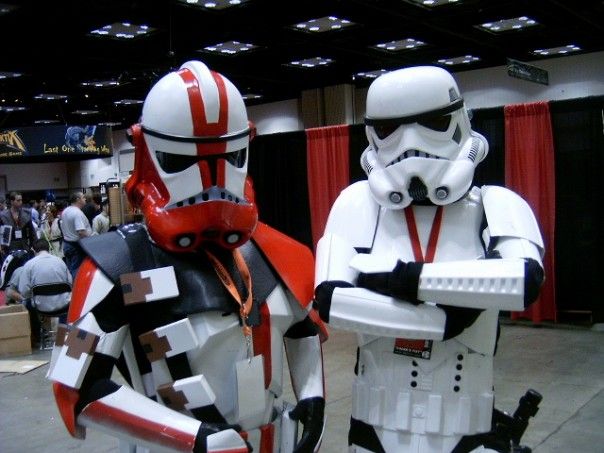
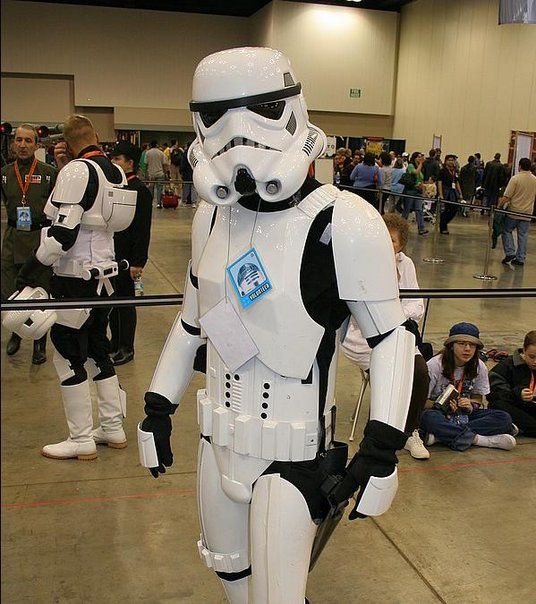
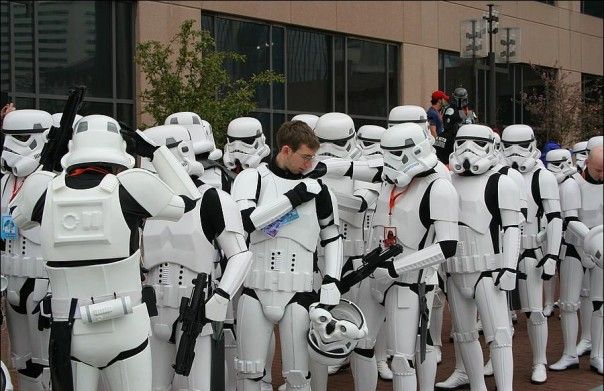
It was an eye-opening experience: not only did I get to immerse myself in Star Wars fandom – something that had up to that point only been online, via places like TheForce.net's forums or the Clone Wars fansite that I helped run, but I got to meet other troopers with the same level of passion as me. I was a little out of places with my white sneakers and somewhat falling apart armor (I should have taken Scott up on his advice – regular Velcro sucked.) A couple of month later, I showed up to Revenge of the Sith in armor, much to the delight of the theater's staff. I wasn't the only cosplayer there: another kid dressed up a Legolas from Lord of the Rings, explaining that he didn't have a Star Wars costume, but didn't want to miss out on the fun.
When I graduated from college in 2007, the 501st was immediately something that I realized I could get into more fully. I had a car, I had a job (a bookseller at the local Walden Books, then Norwich) and income, and a suit of armor. I rejoined the New England Garrison's forums, and saw that Weird Al was doing concerts with troopers. I missed the window for that, but the garrison's CO, Bob Gouveia told me about a Halloween parade in Massachusetts that would take place in October, and that I should do that.
So I did: I patched up my armor, and made the trip down to Woburn. I didn't know anyone there, except for Bob. The group was incredibly welcoming, even though my armor was still kind of crappy and I was wearing sneakers that I covered in white duct tape. (I hadn't figured out where to get the proper TK boots.)
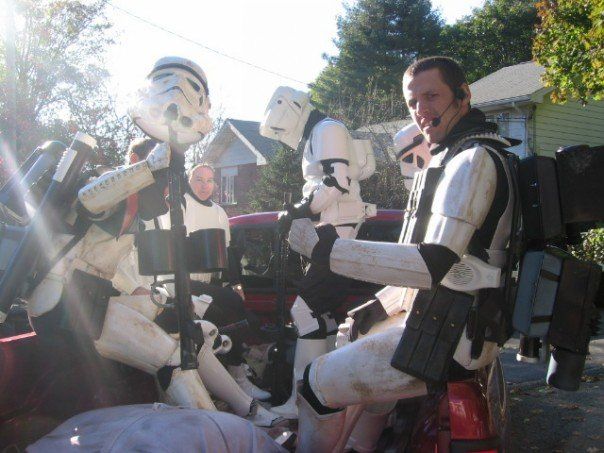
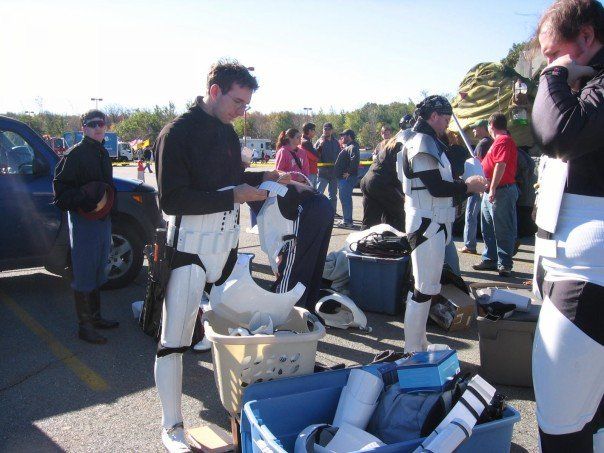
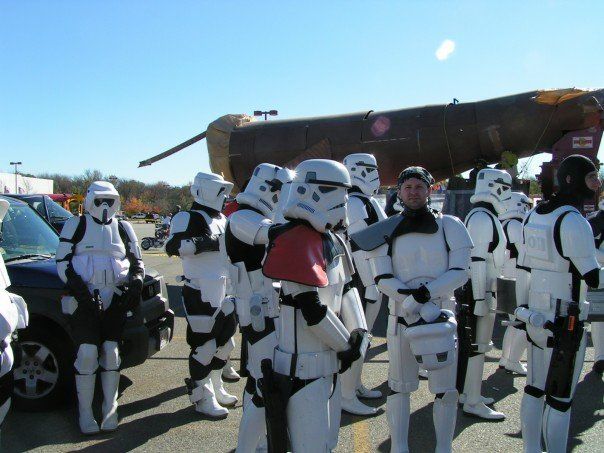
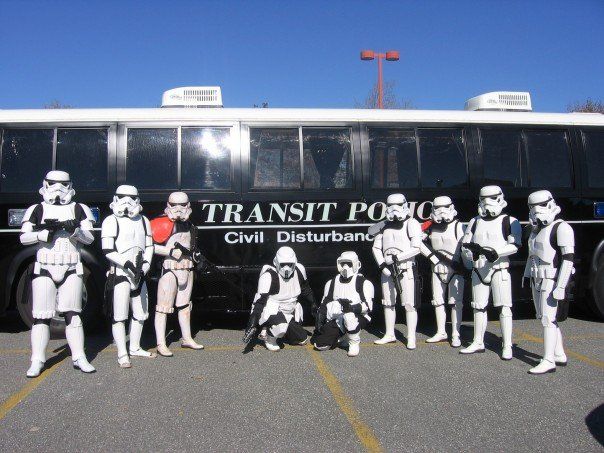
I had a blast marching in that parade, and now seeing how the 501st worked and more costumes up close, I started figuring out how to improve that suit of armor. I stripped off the crappy Velcro and replaced it with the sturdier, industrial-strength stuff. I found a proper pair of boots, and began driving down to any troop I could make it to on the weekends. I made more friends, recruited another in college to join me on my trips down and back, and started looking for more things to troop at locally, from local fairs and festivals to Star Wars trivia nights and Halloween events. It was a fun, exciting time to be a trooper.
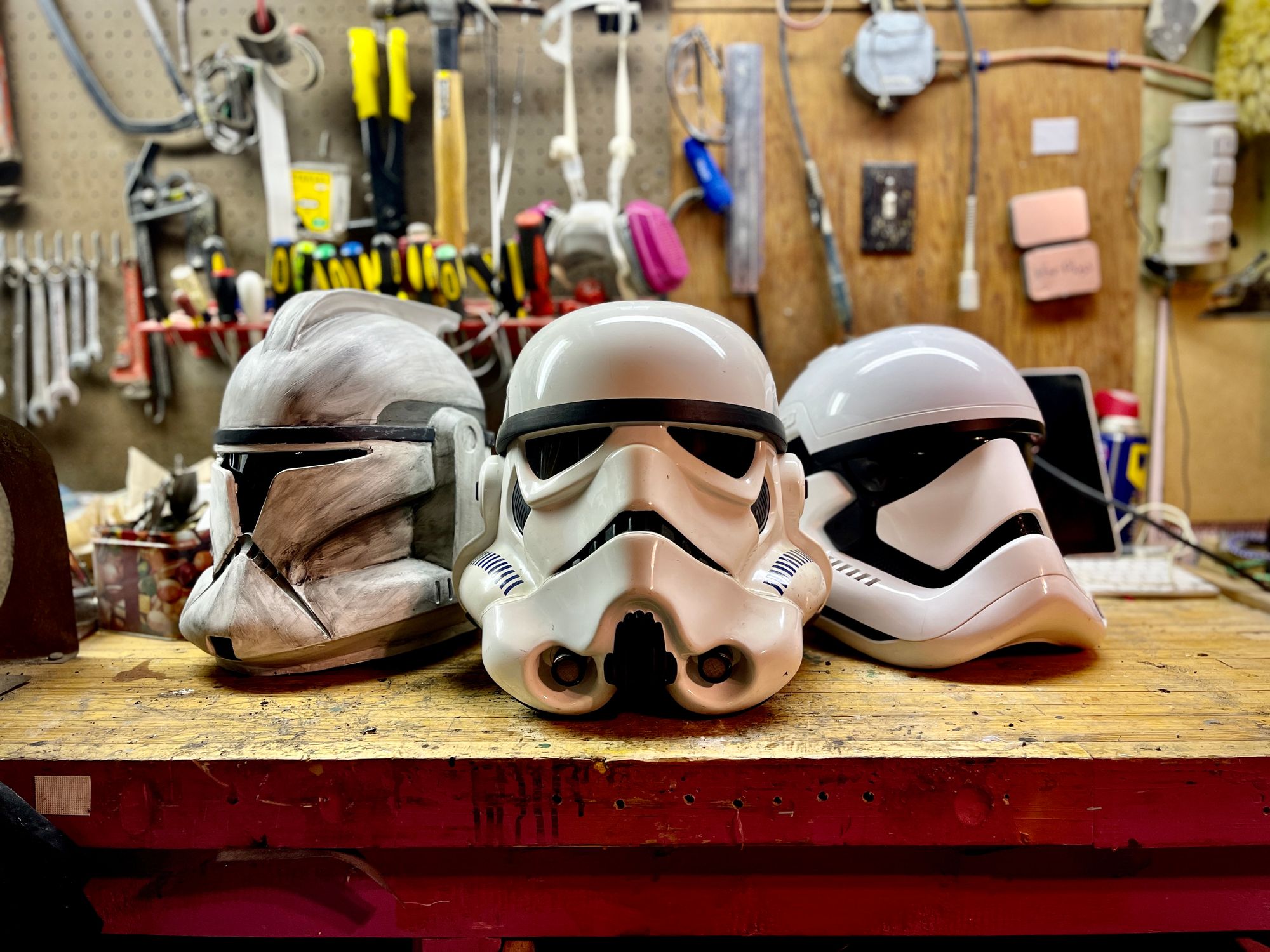
There's a joke in the 501st community: finishing a costume is like popping open a can of Pringles. Once you start, it's hard to stop. Inevitably, when you finish a costume, you're asked: "so, what's the next build?"
Once I'd started regularly trooping, I began to see places where I could improve my suit of armor. Over the years, I've pointed to the FX as a sort of evolutionary jump for the world of Star Wars cosplay. It included everything you needed in a single box, except for an undersuit and boots. The armor came pre-trimmed, so you could essentially do what I did, build it right away.
But there are drawbacks in this kit: it's costume that was sculpted from reference images, rather than directly from the screen-used armor. As a result, it's not entirely accurate to those costumes seen on film. It looks like a stormtrooper and any bystander would recognize it, but if you know what to look for, the differences are obvious: the helmet is comically oversized, the chest is a different shape, and the various components are in the wrong place or the wrong size.
Over the years, I upgraded that original costume: I stripped off the Velcro and glued parts like my legs and arms together, cut apart my abs and back plate, replaced the plastic belt with a proper canvas one that I sewed together, swapped out the hand plates, and bought a new, more accurate helmet.
Along the way, the costuming bug bit me again: I picked up a Phase One Clone Trooper and assembled it. This was a project that required a greater level of creativity and technical work than I'd put into the stormtrooper, and the result was a costume that I'm still extremely proud of. It quickly entered my trooping rotation, something I'd bring out for parades and conventions alike.
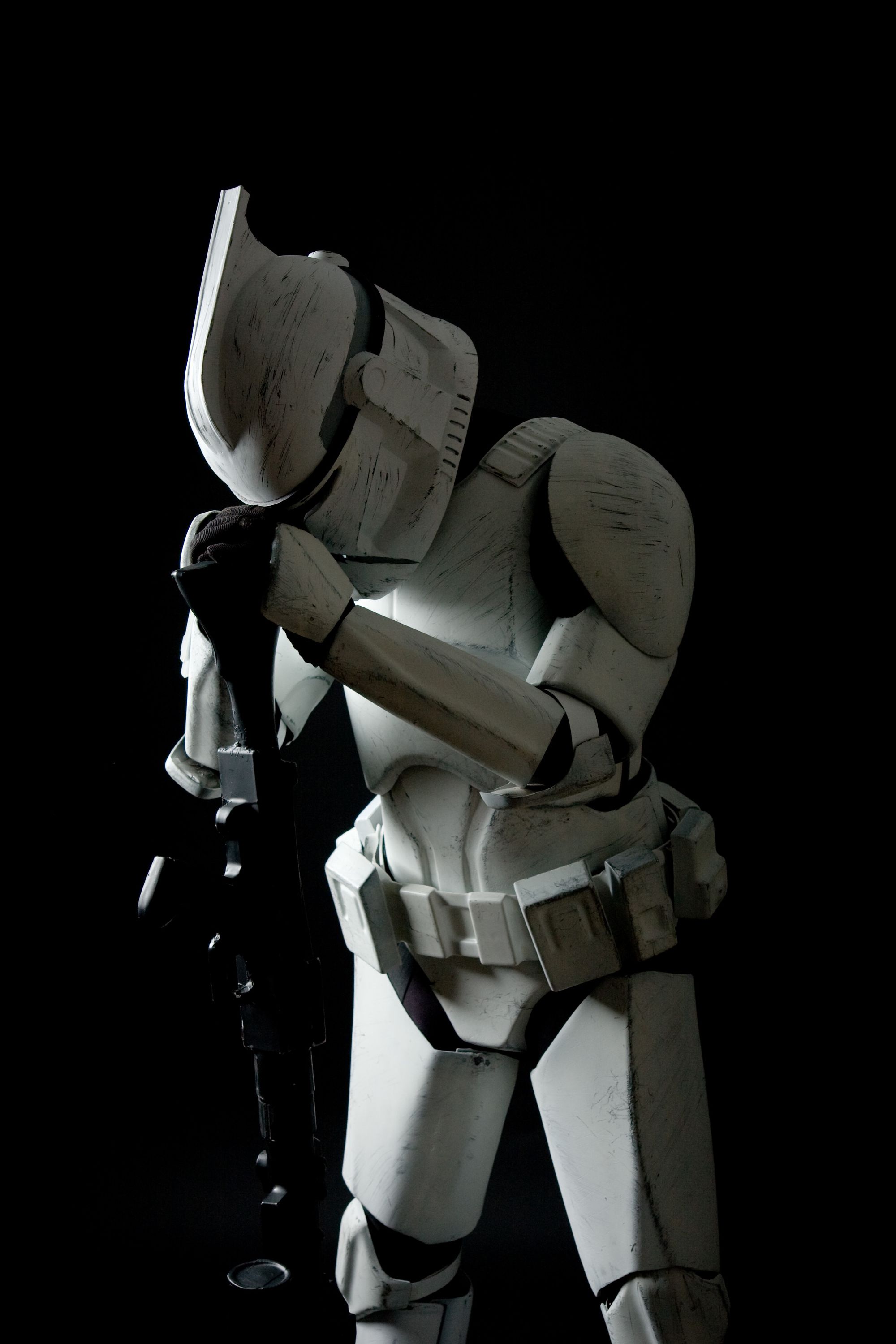
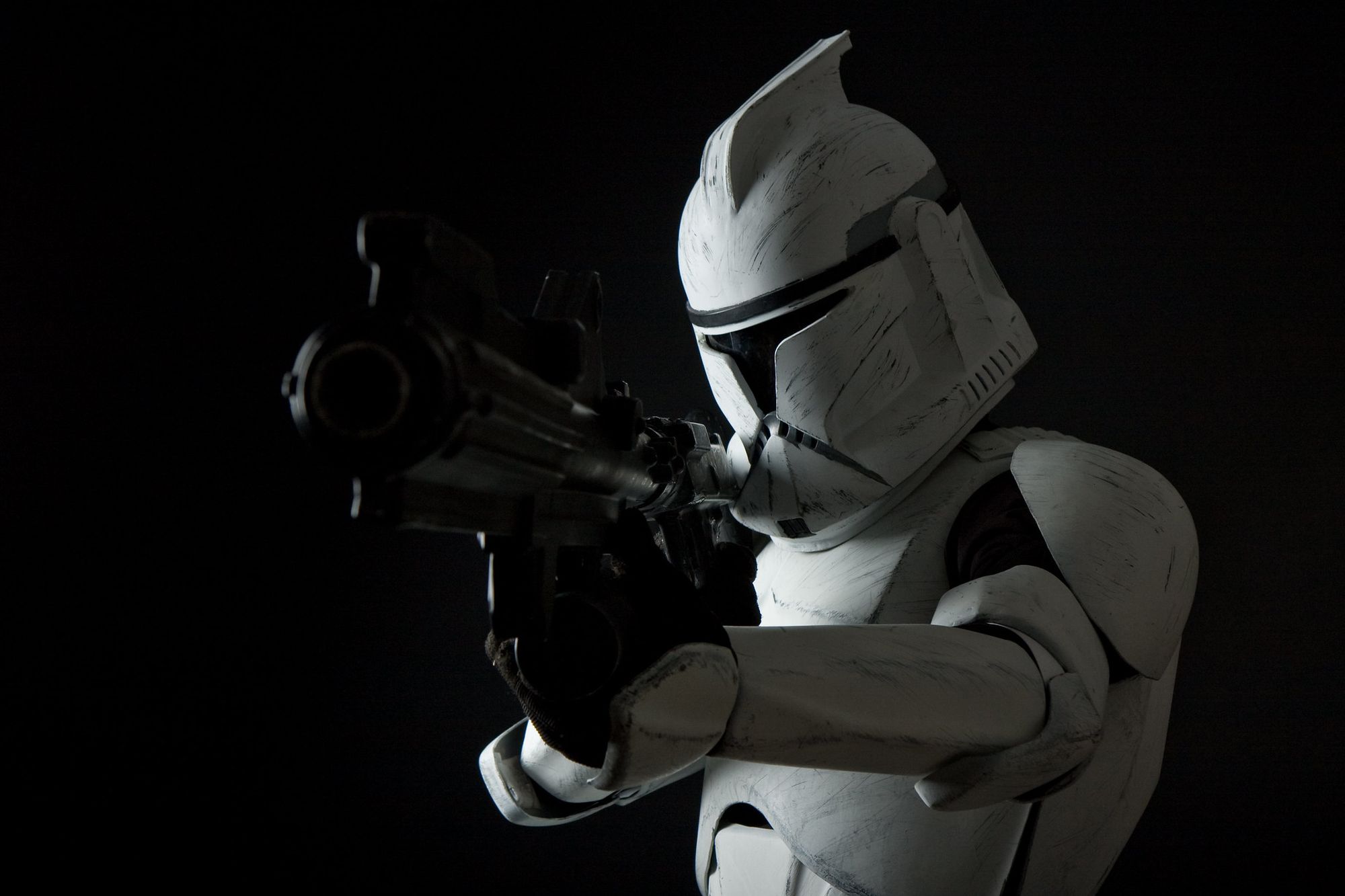
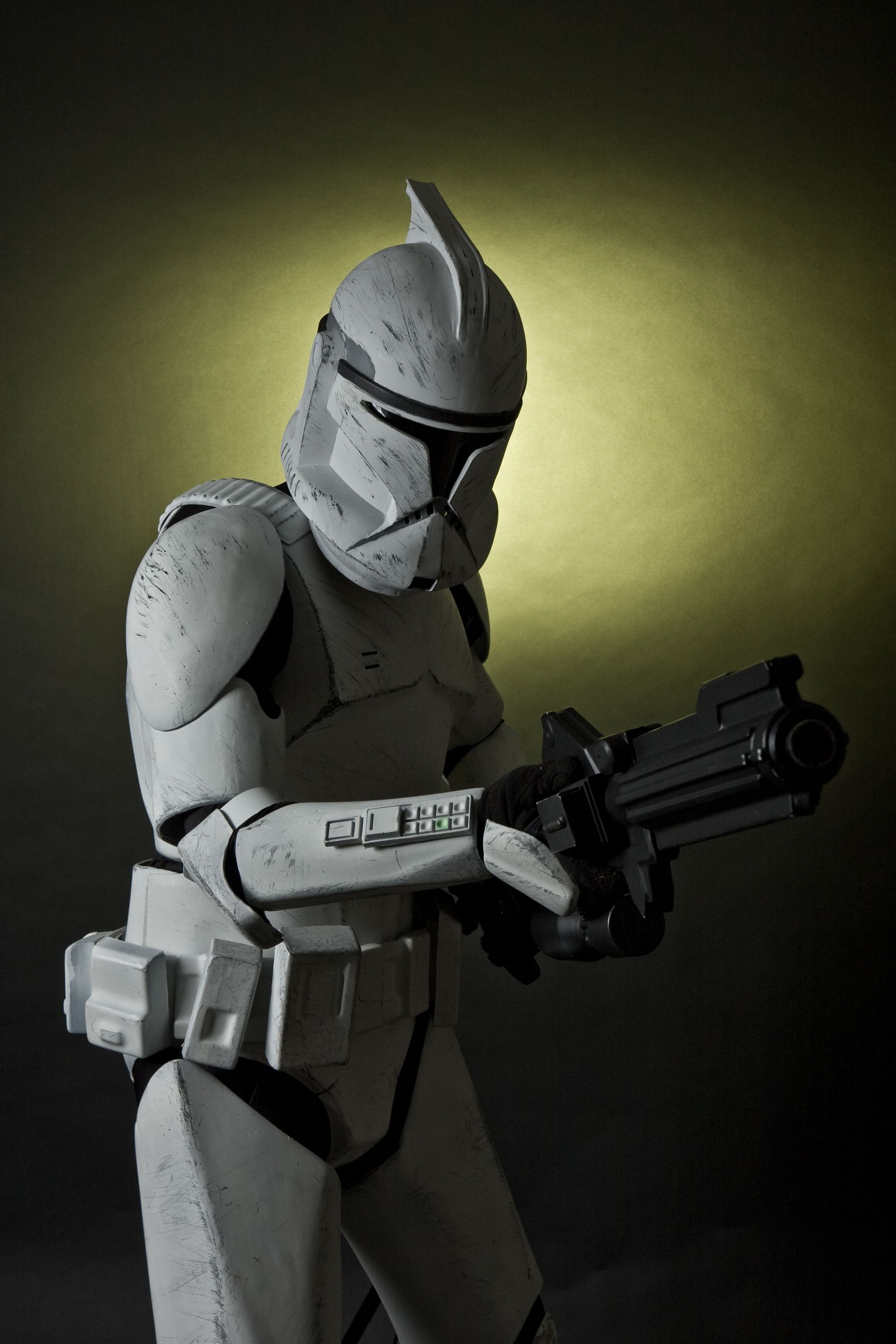
Others followed: an animated Clone Trooper from the TV series for my wife, which she wore a handful of times before I traded it off for 212th Airborne Clone (which I still need to complete). I started another, animated clone trooper, only to stall and sell it to a fellow garrison member, and then a new, more accurate stormtrooper. (I documented the build for io9).
After that, I fell in love with the Shoretroopers from Rogue One, finishing it in time for the premiere of the film in December. After that, I picked up a First Order stormtrooper armor from The Force Awakens, and set about learning how to work with that. Both were challenging projects, ones that I learned quite a bit from as I put them together piece by piece. I ended up jumping across club boundaries and picked up the components for an X-Wing pilot costume, giving me my first non-armor cosplay to putz around in. (It's by far the easiest to manage: everything but the helmet fits inside a backpack.)
Each step along the way was a learning experience: new techniques for building a costume, new ways of looking at the films and studying the costumes, and new realizations at how the costumes were designed.
But more than just learning the technical elements that go into making a costume, what I've found over the last two decades is a vast community of like-minded fans. The members of my local garrison and squad that I came up with over the years have become life-long friends: we've gone to parties, attended one another's weddings, and seen one another through good and hard times. When I travel or attend conventions, I'll likely come across fellow 501st members, finding new friends who I feel like I've known for years. These are the building blocks of durable communities. I won't pretend that it's been smooth sailing in that time: there's been plenty of heartbreak and stress and frustration in that time. It's life.
While writing The Book, I spoke with a fellow Garrison member named M. Blackburn. They're one of the younger generations of cosplayers who hasn't been entirely wedded to the 501st: they've cosplayed as plenty of other characters over the years. They had an interesting observation: "the 501st is more connected," they explained, "I've found family there, where I can't say that with the [whole] cosplay community."
It's a profound point, and looking back on the last two decades, I didn't fully understand the value of the group – the family – I had stumbled into way back in 2003. Fandom is a community, and even in a hyper-connected age, it's easy to fall into a mindset that you're trying to compete with your fellow cosplayers or peers. Groups like the 501st foster the infrastructure for these durable community bonds: build days, garrison parties, troops, conventions, each of which help bring us together a little more. That's something that we need more than ever.
Twenty years is a long time: there are 501st members that weren't alive when I started this. There are fans who've had an entirely different entry into the franchise than I've had, coming in at any number of starting points, whether it's The Phantom Menace, The Clone Wars, The Force Awakens, or The Mandalorian. It's a glorious thing, this shared thread that brings us together through the art of costuming.
In all likelihood, there's some kid out there now who's watched any one of those films or episodes, and thought to themselves "that's a cool costume – I wonder how I can make that?" Two decades from now, maybe they'll be looking back at their own journey, marveling at how far they've come.